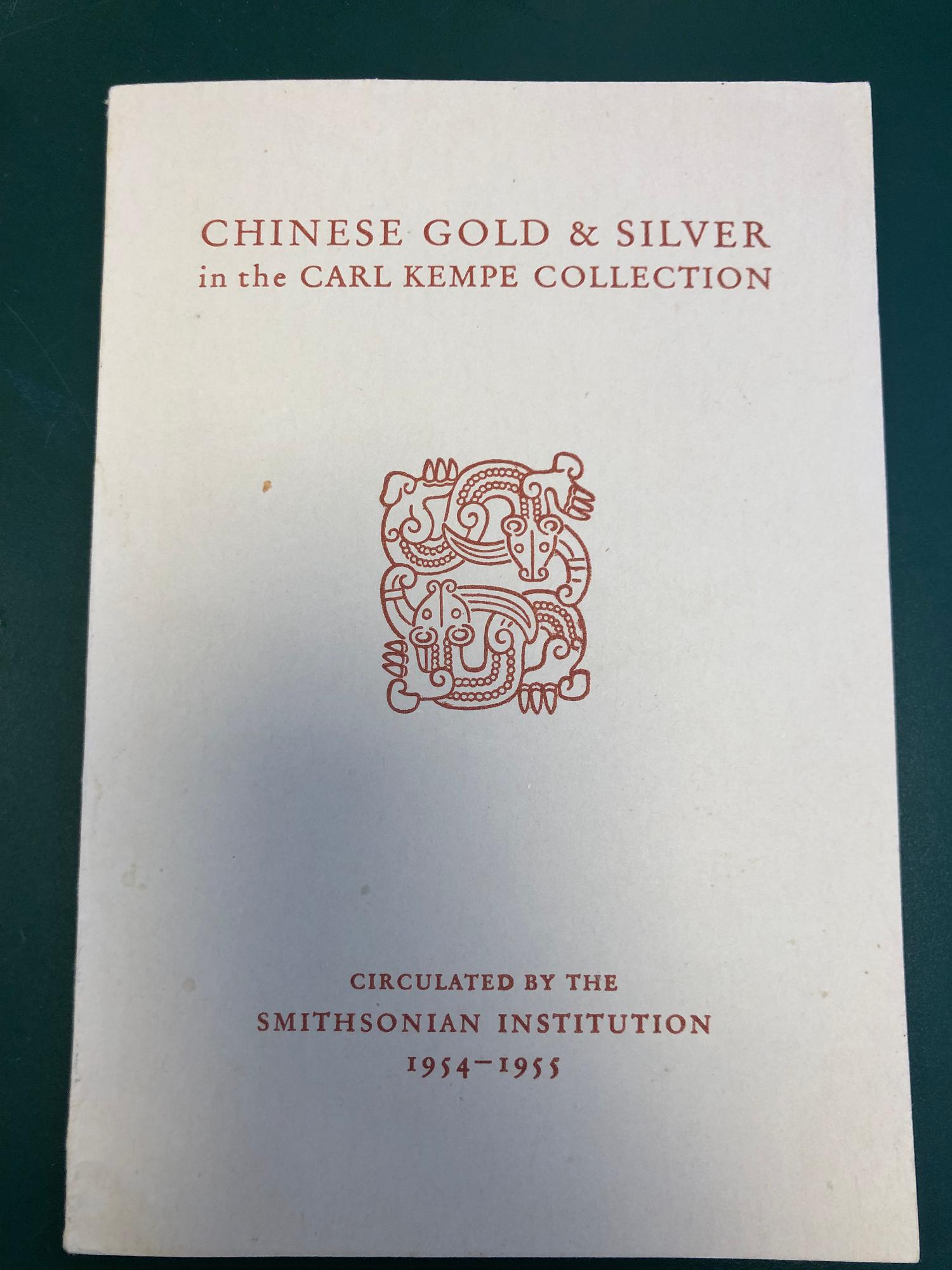Carl Kempes silverhäst.
Drivet silver, hästen med höger ben rest, huvudet vänt svagt åt vänster, öronen är vridna åt olika håll som om hästen lyssnar till något. Hästen har lång man, bunden svans är försedd med seldon, sadeltäcke med dekor i relief av växtslingor. Tidigare katalogiserad som Tangdynastin. Höjd 14,6 cm. Längd 15,3 cm. Vikt med träställ som den är monterad på 319,6 gram.
Slitage, skador.
Proveniens
The Swedish industrialist Johan Carl Kempe (1884-1967) is probably best known as a leading figure of the Swedish pulp and paper industry, as well as an accomplished tennis player who won a silver medal at the 1912 Summer Olympics in Stockholm. He is well known today as a famed collector of Chinese antiquities. A few years ago, a large part of his collection was offered at auction at Christies.
Carl Kempe’s interest in Chinese art began in the 1920s. He belonged to a group of Chinese art connoisseurs who began collecting in the early 20th Century; he was also a member of the China Club in Stockholm (a local branch of the Oriental Ceramic Society in London). Following his initial interest in Chinese art in the 1920s, in 1935-6 Carl Kempe and his wife travelled to China, where, it has been reported, he purchased some 250 items of Chinese art. Kempe had been attracted to Qing dynasty polychrome porcelains initially but he later developed a particular interest in Chinese white-glazed ceramics – especially those from the Tang-Song period. The other area in which he developed a great interest and a spectacular collection was Chinese gold and silver, which ranged from the Bronze Age Zhou dynasty to the Qing dynasty. His third area of specialized collecting was Chinese glass, although he also acquired fine examples of Chinese lacquer, enamels, bronzes and other items, as well as Roman glass.
As an enthusiastic collector, Kempe welcomed scholars and collectors from all over the world, to view and discuss his remarkable collection. He also loaned pieces from the collection to a number of international exhibitions for example, the famous 1935-36 International Exhibition of Chinese Art in London.
After his death in 1967 the collection continued to be displayed at Ekolsund, and in the 1970s some 150 items of ceramics, gold and silver from the Kempe collection were sent on a touring exhibition in the United States.
In 1997 the mayor part of the Kempe collection of ceramics, gold and silver were transferred to the Museum of Art and Far Eastern Antiquities in Ulricehamn. Some ten years later the collection was sold at auction and part of them were auctioned at a sale entitled Masterpieces of Chinese Precious Metalwork: Early Gold and Silver, held by Sotheby’s London on 14 May 2008.
This horse has stayed with family members due to it was given as a gift to Mr Kempes stephson and are now for the first time offered for sale by the family.
Utställningar
Chinese Gold & Silver in the Carl Kempe Collection, Circulated by the Smithosonian Instituion 1954-55. No 131, depicted on page 36.
Compare a silver bull in the British Museum, Inv. no OA+.43, aquired from the Collection of George Eumorfopoulos.
Litteratur
Michel Beurdeley, The Chinese collector thorugh the centuries. From the Han to the 20th Century. 1966. Depicted on page 56, dating it as Tang dynasty.
China's Imperial Tombs and Mausoleums, by Luo Zhewen, page 78, depicts gold foiled Tang dynasty horses, excavated in Shaanxi, page 81, he depicts a gold plated horse from the Tang Dynasty, excavated in Xi'an. Otherwise little is know about gold or silver tang horses.
Övrig information
The discussion about tomb silver figurines have long been discussed, see scanned letter signed by Alfred Salmony, in 1941 discussing and examining a silver bull.


































































































